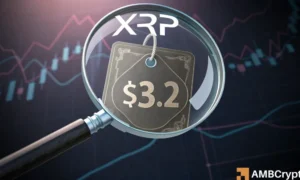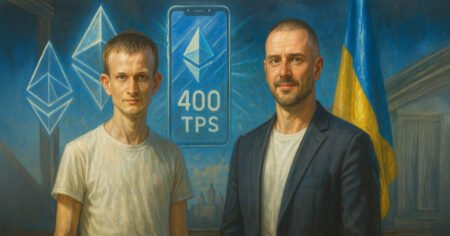Reimagining the Open Internet: The Urgent Need for Decentralized Infrastructure in Web3
In the early days of the internet, Tim Berners-Lee envisioned a world where digital communication was open, equitable, and devoid of monopolistic control. However, as we navigate the complexities of today’s web, that dream seems further from reality than ever. Instead of cultivating a fertile garden of innovation and collaboration, the internet has become an arena dominated by powerful political bodies and profit-driven corporations. This transformation raises critical questions about the centralized systems currently in place and highlights the importance of embracing decentralized solutions, particularly through Web3 and the development of decentralized applications (DApps).
The Challenge: Centralization and Its Consequences
The irony of DApps lies in their foundational dependency on centralized infrastructures. Many developers might craft aesthetically pleasing and functionally decentralized interfaces, yet they often rely on traditional backend support from centralized platforms like Amazon Web Services (AWS), Google Cloud, and Microsoft Azure. These services are convenient but inherently flawed due to their single-point vulnerabilities, leading to global outages and downtime that can cripple the performance and reliability of DApps. Historic disruptions offer stark reminders of these vulnerabilities; when platforms like Infura block access due to regulatory sanctions, users of decentralized wallets like MetaMask find themselves cut off from their assets temporarily. Such incidents illustrate the paradox that DApps face: they strive for decentralization but frequently revert to centralized dependencies.
The Imperative for Decentralization in DApps
To realize the true potential of DApps, it is essential to move away from these central infrastructures. Embracing a decentralized stack transforms DApps from mere concepts into viable applications that can thrive without interruption. By utilizing open-source protocols such as InterPlanetary File System (IPFS), Filecoin, and Arweave, developers can create DApps that offer a reliable, tamper-proof storage solution with high uptime. Through independent node operators, these decentralized networks distribute data queries across multiple avenues, greatly enhancing the resilience against outages and maintaining constant information flow. In doing so, DApps can eliminate reliance on intermediaries that exert control over data accessibility, paving the way for a more democratized digital space.
Pocket Network: A Beacon for Open Data Accessibility
A beacon for this transformation is Pocket Network, which aims to unlock open data accessibility free from centralized entities. The recent Shannon upgrade has introduced the first truly permissionless Open API Network, thus revolutionizing how DApps access information. Decentralized social networks, such as BlueSky, and DeFi protocols using Chainlink epitomize this shift. These frameworks do not depend on centralized RPCs, but instead leverage decentralized alternatives, ensuring the flow of information remains unimpeded. By creating an environment devoid of single points of failure, Pocket Network and similar organizations are working to reshape the digital landscape in a way that aligns with Berners-Lee’s original vision.
Reviving Berners-Lee’s Vision of an Equitable Internet
Tim Berners-Lee’s dream was never to establish walled gardens controlled by powerful corporations, but to facilitate open communication free from the constraints of intermediaries. This ethos resonates with the decentralized, peer-to-peer systems initially envisioned by Satoshi Nakamoto, aiming to create a financial ecosystem that fosters transparency and fairness. While the evolution of cryptocurrencies has led to misuse and speculation, it is essential to return to the foundational principles that guided their inception. Innovators in the Web3 space are busy working toward a future where equitable digital accessibility is not just a luxury but a fundamental right.
The Future: Building a Decentralized Digital Ecosystem
As we look forward, a robust decentralized infrastructure is crucial for the evolution of significant sectors, including crypto, artificial intelligence, and various emerging technologies. With a burgeoning open data market valued at $350 billion, dispersing control from centralized entities to decentralized networks is imperative for cultivating innovation and accessibility. By doing so, we can eschew the shortcomings of the Web2 business model, aligning instead with a vision that fully encapsulates the principles of the original internet.
Conclusion: The Need for Action
In sum, the time has come to reimagine the internet as a truly open and decentralized platform that stands in stark contrast to the current centralized systems that govern it. Embracing decentralized infrastructure is not just a technological shift; it’s a necessary evolution in our digital society. As such, a concerted effort must be made by developers, innovators, and users alike to promote a resilient and reliable internet. By prioritizing the development of decentralized DApps and their supporting infrastructures, we can honor Tim Berners-Lee’s vision and foster a digital space that genuinely serves and empowers everyone. The journey toward reclaiming an open and accessible internet begins with us.

















